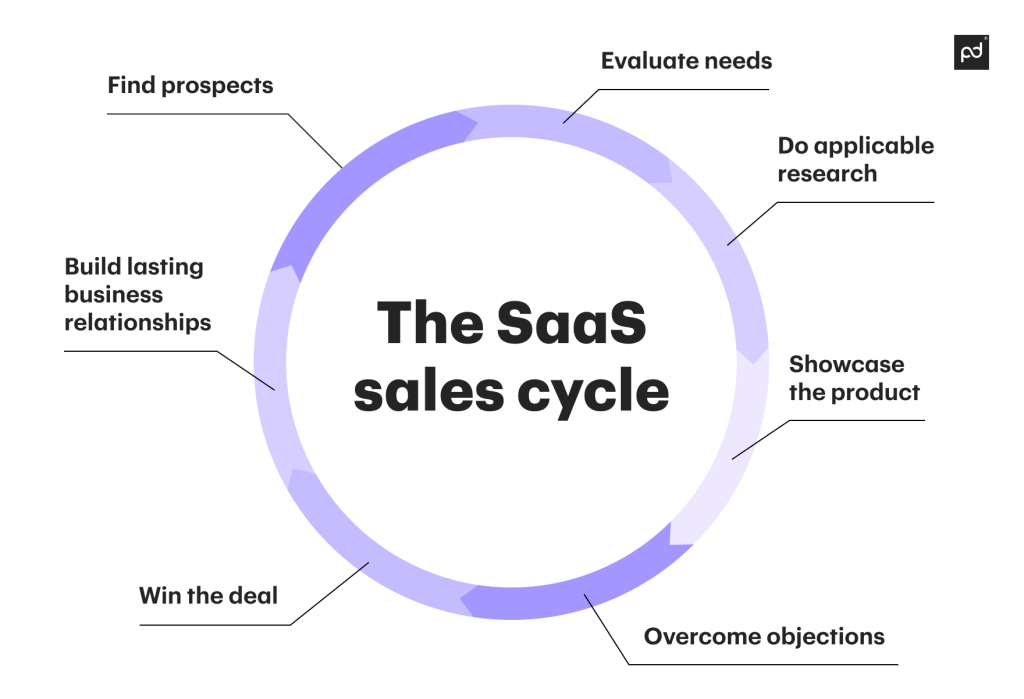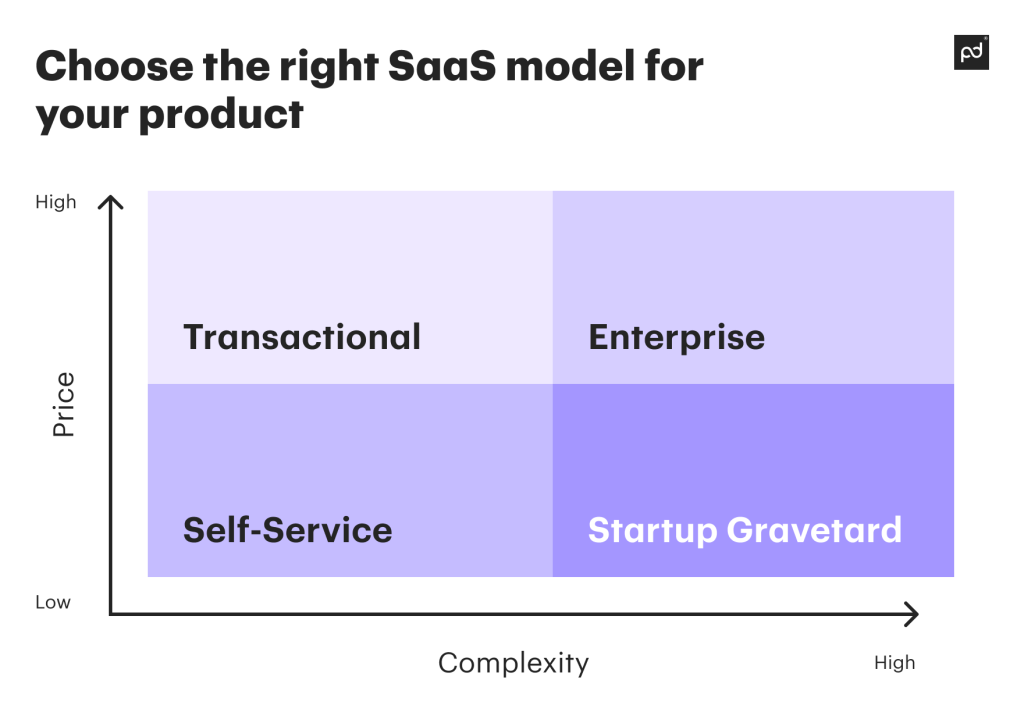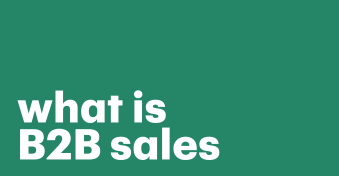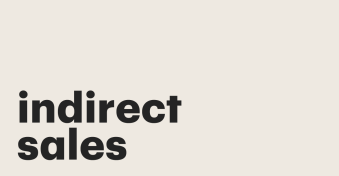Businesses worldwide seek to overcome the limitations of on-premise software and plan to transfer over 60% of their workflows to the cloud by 2025.
Given this, the market for SaaS products is expected to skyrocket alongside cloud adoption.
Where does your SaaS business fit?
Are you looking to enhance enterprise SaaS sales, scale up a medium-sized business, or boost your startup growth?
Remember, the SaaS niche is highly competitive (as a SaaS company with tens of thousands of clients, PandaDoc knows this firsthand), and you need an advantage to take the lead in it.
Below, we break down how to supercharge your SaaS sales strategy, which model will work best for you, and what RevOps tools can help make sales processes more efficient.
Key takeaways
- Startups with a SaaS model attracted 47.6% of all venture capital investments in 2023, evidence of market demand for SaaS solutions.
- There are three common SaaS models — self-service, transactional, and enterprise — that you can leverage based on your business size and goals.
- The SaaS sales cycle can be a quick sprint or a marathon — it all depends on your product type and level of customer engagement.
- Using sales automation software, your sales team can streamline processes and track such crucial metrics as conversion rates, customer acquisition costs, and lifetime value.
What does SaaS sales stand for?
SaaS sales is the art of selling software-as-a-service (SaaS), focused on methods to obtain new customers while retaining/upselling existing ones.
This new standard delivery model for business intelligence software utilizes cloud-hosted SaaS platforms like Google Workspace, Adobe Creative Cloud, and PandaDoc, allowing users to access and benefit from regularly updated software from any location.
What makes selling SaaS products different from other types of sales?
Selling SaaS pivots from traditional sales models, and here’s why:
- When your team sells a SaaS product to a customer, they de facto sell a subscription to a product, unlike one-time payments for on-premise software typical in traditional product sales.
- SaaS sales reps prioritize long-term customer relationships and retention, measured by customer churn, while sales teams in other industries often concentrate on acquiring new customers for one-time sales and less on post-sale engagement.
- SaaS sales reps typically offer customers upgrades of subscriptions (upselling) and additional products (cross-selling), while in traditional sales, salespeople have limited opportunities to extend an initial offer after purchase.
Understand the SaaS sales process and lifecycle
Selling SaaS products, your sales team blends strategic actions with tools to enhance engagement and retention.
The SaaS sales process
The steps to convert leads into paying customers include the following:
- Identify and qualify leads using various channels
- Start initial contact with a potential customer
- Showcase your product, focusing on a subscription-based model
- Understand prospects’ pain points and explain how your product can help solve them
- Offer a trial period and provide case studies to demonstrate your product’s value
- Provide clear explanations and tips to address any user concerns
- Negotiate contract terms and close the deal
- Focus on providing excellent customer support and consider cross-selling and upselling options
Salespeople must fully convey the product’s value, such as its enhanced security, competitive pricing, and integration capabilities.
Reps also use hyper-personalized sales documents like proposals and case studies that adapt to different features, price ranges, and order volumes to provide consistent and accurate information to prospects.
The SaaS sales cycle
Likewise, the length of a SaaS sales cycle will fluctuate. A typical lifecycle will encompass the following:

If you’re in sales, you already know: salespeople handle massive volumes of documents during the entire selling process.
With the help of workflow automation software, your team can streamline their document handling processes, including the automatic drafting, sending, and signing of sales documents.
They can use just one platform that integrates smoothly with top CRM systems, such as Salesforce and HubSpot, to sync sales documents directly with customer data and sales pipelines.
This integration allows salespeople to keep every piece of client communication customized and efficiently tracked.
To ensure that contracts are processed quickly and securely, your team can use real-time collaboration tools and e-signature features.
The combination of tools and features saves time and adds strategic value, improving the number of deals closed.
Choose the right SaaS model for your product
Let’s see how the following three SaaS sales models fit various customer needs.

Self-service model
SaaS platforms like Dropbox or Canva offer easy sign-up and free trials, allowing the product to demonstrate its value directly to a wide range of users, from startups to enterprises, without salesperson involvement.
This model allows the product to speak for itself, demonstrating to users its value.
Transactional sales model
Imagine a SaaS service like a mid-market CRM system.
In this model, a salesperson might reach out to potential clients using video calls or emails to present the product’s benefits and hit the prospect’s inbox with personalized pitches
This model requires a SaaS sales team trained to effectively communicate their product knowledge to prospects and be able to offer the best customization options.
For example, in a CRM system designed for real estate agencies, a salesperson can use advanced analytics to identify hot leads based on data such as the frequency of website visits or interactions with property listings.
Using this information, salespeople can customize video calls to highlight properties that meet the specific interests of prospects.
Enterprise SaaS sales model
When enterprise-level clients adopt new, custom solutions, this often transforms business processes across their entire ecosystem.
Picture an international corporation rolling out a new global CRM system to enhance customer interactions across all touchpoints.
Their sales crew can use the CRM’s segmentation tools and tailor their communications to the unique needs and behaviors of different customer segments.
This strategic personalization helps boost customer satisfaction and loyalty.
Enterprise sales demand a top-tier, synchronized effort of your sales, marketing, and product experts to build long-term relations with customers and foster customer loyalty.
How to run a predictable SaaS sales organization
Running a predictable SaaS organization is just like running a real marathon — it takes dedication during ups and downs in sales volumes.
Here are three techniques to ensure the sturdy growth of your SaaS sales team.
Solve customer’s pain points
Sales reps should by all means emphasize the value of a product to clients and become well-versed in their prospect’s or client’s needs and ways to resolve them — and keep in mind that nearly half of potential clients will prioritize price when choosing a SaaS product.
Commitment, persistence, and knowledge are key and will help win more deals and turn first-time clients into loyal ones.
Build predictable sales pipelines
Constructing a reliable sales pipeline hinges on three aspects: referrals, marketing campaigns, and targeted prospects.
To master all three, sales reps should flexibly adapt to ongoing clients’ needs, use analytical data to optimize their approaches, and ensure quality content marketing efforts.
Empower your team
Another driver behind an organization’s success is when a team feels like they are decision-makers themselves.
Motivate your employees with support from the ground up, encourage their efforts to include new tools that improve the SaaS sales process, and always promote a positive, productive, and inclusive company culture.
What tech can help with SaaS sales?
Technology is here to assist you and your team! Here are some specific examples of tools and tips you can start implementing today.
Integrate your CRM
When you sync up your CRM, you’re giving your sales team superpowers: they can smoothly access centralized customer data, track interactions with documents — and quickly boost sales efficiency.
You can join 22,000 clients who have already integrated PandaDoc solutions with CRM platforms like Salesforce and HubSpot to take their sales to the next level.
Adopt e-signature
Using e-signature is crucial to speed up the agreement process.
It helps your sales teams securely send documents for signing electronically, reducing the time to close deals.
Incorporate version history and document tracking
SaaS proposals and contracts undergo numerous revisions, and keeping track of versions is essential.
That’s where document tracking software comes in to provide an audit trail.
Using the version history feature, both sales teams and customers can stay on the same page — to date, nearly 19,000 PandaDoc accounts keep all their sales documents current, minimize miscommunication, and ease negotiations and approvals.
SaaS sales key metrics to track
Let’s take a look at the core contract performance metrics that will help you measure the return on investment (ROI) of the SaaS sales model you choose.
| Annual contract value | The financial impact of a contract per year |
| Total contract value | The overall value of a contract, from beginning to contract termination |
| Order value variance from original contract value | The difference between the expected value and the actual total revenue for all orders |
| Annual recurring revenue | Predictable and recurring value from subscription-based services or products per year |
| Renewals | The overall percentage of renewed contracts, plus auto-renewed contracts, plus value of contract that got renewed and stayed as their originals |
| Vendor fraud | Illegal actions of suppliers or services providers that could lead to potential revenue losses |
| Contract risk management | Assessment of ongoing risks and drawing up a risk mitigation plan |
Elevate your SaaS sales game with PandaDoc
Having a great product is not enough in the SaaS niche — fine-tune your SaaS sales strategies for peak efficiency.
PandaDoc offers a suite of sales tools meant to supercharge your team’s performance.
With our document repository, you can pull together all your sales documents into a centralized hub to have sales collateral, proposals, and contracts at your fingertips.
Due to the platform’s multiple integrations, you can seamlessly connect your existing solutions with over a dozen popular SaaS products to enjoy automated data entry and ensure a smooth, secure workflow.
Using professional business templates, your salespeople can create compelling proposals and customize them as per the specifics of each deal.
Let your team sell more while spending less time on document management tasks.
Connect with us today and schedule a demo to see how our solutions can empower your sales team.
Disclaimer
PandaDoc is not a law firm, or a substitute for an attorney or law firm. This page is not intended to and does not provide legal advice. Should you have legal questions on the validity of e-signatures or digital signatures and the enforceability thereof, please consult with an attorney or law firm. Use of PandaDoc services are governed by our Terms of Use and Privacy Policy.


